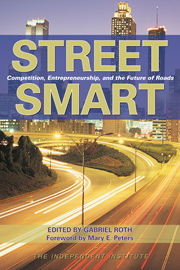The City Council should ensure that bus-based transit systems are considered for Honolulu’s proposed elevated transit system. Rail trains are large and heavy, so an elevated track strong enough to carry road traffic need be no larger or stronger than one built for rail trains.
The big advantage of rail transit is its dedicated right-of-way, which enables rail service to avoid traffic congestion on the roads. But bus systems, too, can be provided with dedicated rights-of-way, which some call “busways.” They have the following advantages over trains:
- Buses don’t need stations on the busway, as they can collect and deposit passengers close to the origins and destinations of their trips, without passengers having to change modes. Such bus lanes have been operating since 1969 on the Shirley Highway express-bus-on-freeway project in the Virginia suburbs of Washington, D.C. As there were not enough buses to fill the bus lanes, the lanes were opened to carpools in 1973.
- Space between rail trains is always wasted, but space between buses can be used by other vehicles, which need not necessarily be carpools. The HOT (high occupancy or toll) lanes opened in 1995 on a 10-mile stretch of California’s State Route 91, east of Los Angeles, demonstrated that toll-paying vehicles can be identified in motion and charged electronically, without having to stop. Furthermore, the tolls are varied by time of day to ensure that the lanes are never congested.
- Busways can carry buses of different companies and thus provide competitive service. But rail service has to be provided by a monopoly, generally unionized. That unionized rail staff can cause problems is evident from the current rail strike in Paris.
- Bus systems have superior carrying capacity. Five hundred buses, carrying about 25,000 seated passengers, often enter New York City’s main bus station in one hour on one dedicated bus lane. And an unobstructed traffic lane can accommodate more than 1,000 buses an hour, carrying 50,000 seated passengers in 50-seat buses. Rail services cannot carry such high traffic volumes without forcing passengers to stand.
- Rail services generally stop at each station along the line. Buses utilizing a busway can travel nonstop from passenger origin to destination.
- Because of their smaller size, individual buses run more frequently than trains, thus reducing the waiting time of passengers.
- Finally, despite the numbers of drivers employed, bus systems cost much less than rail systems.
- It is thus apparent that there are at least two alternatives to the rail mode that can be considered by the Council for Honolulu’s proposed elevated transit system:
- a dedicated busway on which only buses can run; and
- express toll lanes available to buses at no charge but open to other vehicles on payment of a fee. The revenues generated could pay for part—possibly even for all—the busway costs.
High-capacity busways on dedicated lanes operate in Curitiba,Brazil; Bogota, Colombia; Brisbane, Australia; Ottawa, Canada; and Port-of-Spain, Trinidad. Express toll lanes with variable toll lanes operate in the vicinity of Los Angeles, San Diego, Minneapolis and Denver, and are being planned for the Washington, D.C., area. Should not such modern facilities be at least considered for Honolulu?








